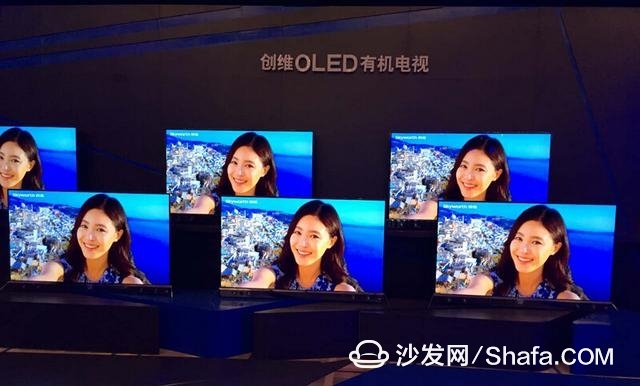
It is an indisputable fact that the growth rate of the LCD TV market in China and the world has stagnated or even shrank. At the same time, as an alternative to LCD TVs, OLED (Organic Light Emitting Diode) TVs have experienced rapid growth and have entered the market for popularity.
As a leader in the global LCD panel industry, Samsung is selling some of its LCD panel factories in order to ensure that more funds and energy can be invested in the OLED industry.
Samsung successively sells LCD panel factory to OLED industry
Recently, Samsung announced that it will dispose of its 7th generation TFT-LCD (liquid crystal panel) production line equipment at the end of 2016, and Chinese mainland panel makers such as Truly Semiconductors, BOE and Huaxing Optoelectronics have all become potential buyers.
Samsung is not the first time to sell its LCD panel factory. In January 2016, Samsung announced that it will sell certain parts, components, machines and equipment of its fifth-generation TFT-LCD (liquid crystal panel) production line and color filter production line to Truly Semiconductors, a LCD panel manufacturer in mainland China.
The reason why Samsung abandoned the LCD panel factory is because the weak market demand for LCD panel has brought about a very negative impact on Samsung. According to Samsung Electronics' first-quarter earnings report in 2016, due to the sluggish LCD panel market and continued decline in selling prices, Samsung Electronics’ display operating loss in the first quarter was KRW 270 billion. Samsung's new flagship mobile phone Galaxy S7 S7 edge ahead of its release and its strong sales performance, making Samsung OLED panel business revenue increased significantly.
Samsung is also supplying OLED panels for other handset makers. Apple is currently negotiating with Samsung Electronics Co. Samsung Display, which will supply OLED panels to Apple Inc.’s iPhones as soon as next year.
For large-size OLED TV panels, Samsung has been increasing research and development efforts. On March 2, 2016, at the "Samsung China Forum 2016" held in Shanghai, Samsung demonstrated 55-inch transparent OLED TV on the spot. The product is mainly used in jewellery display cabinets, beverage freezer doors, traffic control sandboxes and other commercial areas.
OLED TV market speeds up, replacing LCD TVs faster
Samsung's move into the OLED TV camp is naturally good news for the OLED TV market.
Passive light-emitting LCD TVs have congenital technical defects - the liquid crystal display itself can not emit light, need to rely on the backlight lamp behind the display to illuminate the screen, so the LCD TV image layering, dynamic image performance, can The viewing angle, response time, and other aspects performed unsatisfactorily. The active color OLED TV screen is true to color, has an ultra-wide viewing angle, and is capable of displaying the ultimate black color. Its pixel count is 64 times that of LCD TVs and is the best choice for HDR technology. Since last year, color TV companies such as Skyworth, LG, Konka, and Changhong have been promoting OLED TVs in the high-end product segment.
Skyworth, LG and other manufacturers are convinced that OLED TV is about to replace LCD TVs, and that the domestic middle class has a certain scale, which is an important signal that reflects market demand. Moreover, with the increase in the supply of upstream OLED panels and the increase in yield, the price of OLED TVs can be further reduced. Therefore, the time for vigorous promotion of OLED TVs has arrived.
Following the release of the hot-selling OLED TV S9300 last year, in April 2016, Skyworth and Warner, Tencent Penguin TV released the new OLED organic TV S9-I. Skyworth's newly developed OLED TV adopts 4-color HDR display technology. 4-color HDR is based on the ordinary HDR, adding HDR algorithm for 4 color 4K screen body, thus beyond the ordinary HDR. By adding HDR algorithm on the 4 color 4K screen body, the OLED TV screen body can better enhance the contrast and color reproduction degree when displaying the HDR film source, so as to achieve the unmatched effect of the ordinary HDR technology of the LCD TV.
In the era of Internet popularization of smart TVs, the operating modes of different color TV companies are quite different. Contrary to the marketing gimmick of some color TV companies that “buy content and send TV†is: Skyworth wants to “buy TV to send contentâ€. The pioneering move of Skyworth's “Buying hardware to deliver content†has driven the TV industry to accelerate the transformation and upgrading of content services, and has also caused color TV manufacturers such as Hisense to follow suit.
Although the overall situation of China's color TV market was severe in 2016, the growth rate of the high-end market represented by OLED TVs is still rapid.
Ovey Cloud.com expects that China's OLED TV market will reach 200,000 units in 2016, an increase of 4 times year-on-year. According to data from third-party research institutions, the global OLED market in 2016 will reach US$15 billion, and by 2022, this market will grow to US$29.1 billion. The data shows the strong development potential of the OLED industry.
Samsung's switch to the OLED camp will undoubtedly further stimulate the vigorous development of the OLED TV market.
Brand Name : ONEREEL
Export Markets: Global
Mould Name : plastic Spool Mould
Shaping Mode :injection mould
Mould Size :According the sample size
Mould cavity: Single/multi
Runner system:Hot/cold
Mould steel choice: 45#, P20
Mould life: >600000 shots
Mould running: Full off automaticity
Product Size : as your required
Product description:
Product material:plastic
Delivery time : 30~60 days
Spool Mould
Spool mould, plastic spool mould, reel mould, plastic reel moulds, cable reel mould, bobbin mould
NINGBO BEILUN TIAOYUE MACHINE CO., LTD. , https://www.spool-manufacturer.com